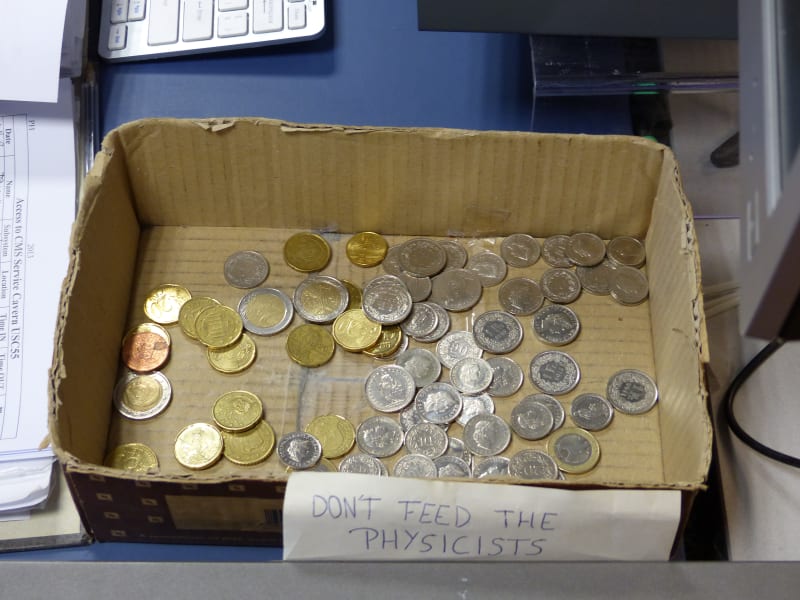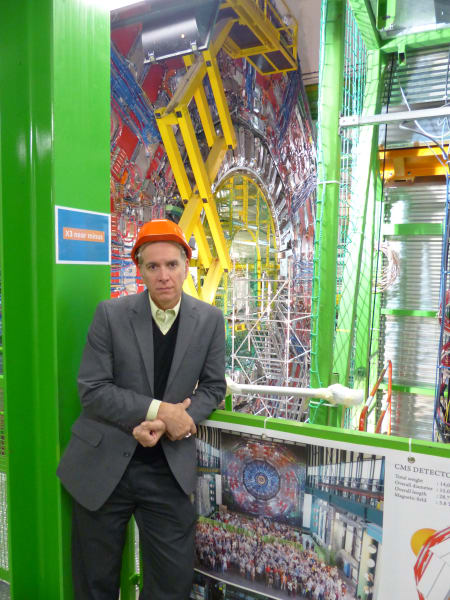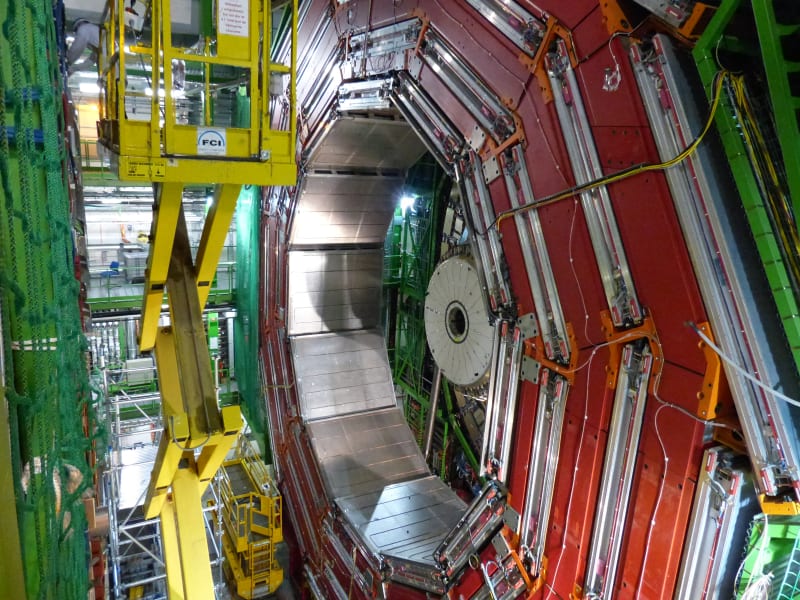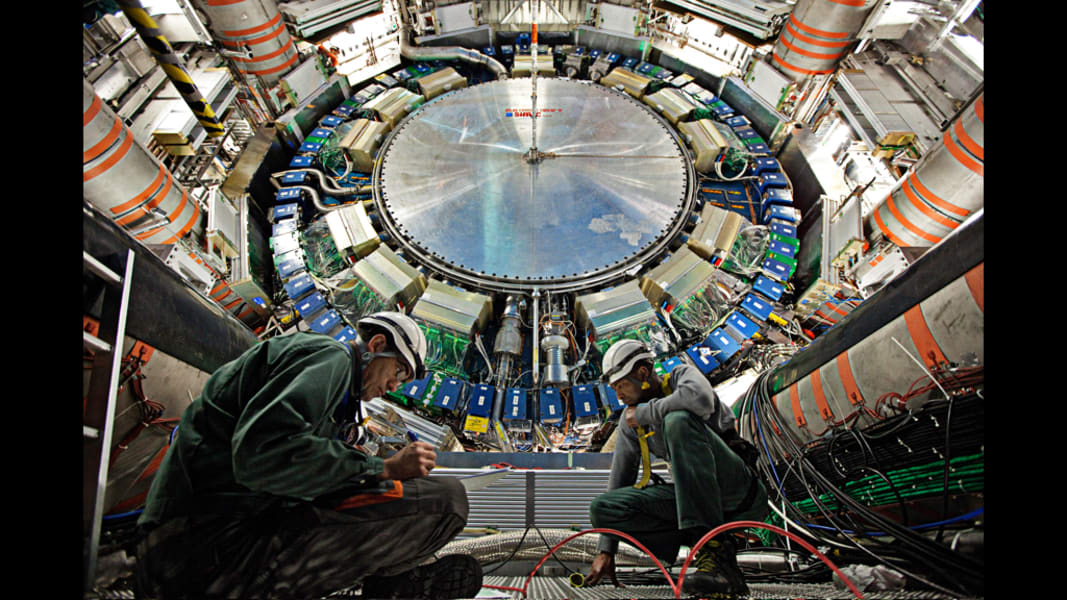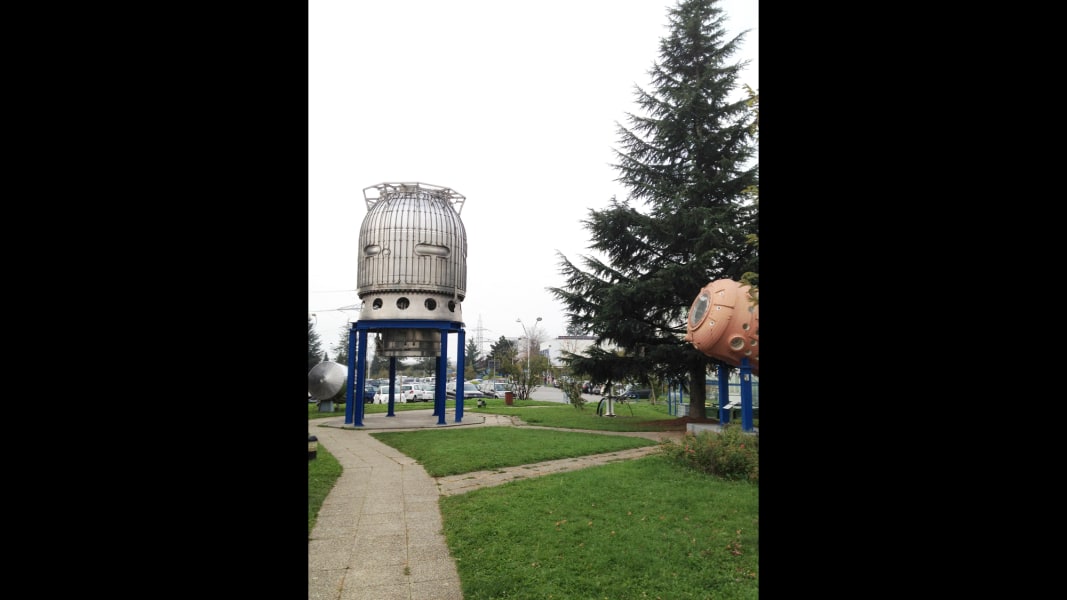Share


1 of 18
The Large Hadron Collider is located at CERN, the European Organization for Nuclear Research, near Geneva, Switzerland. This is CERN's Globe of Science and Innovation, which hosts a small museum about particle physics inside. The ATLAS experiment is housed underground nearby. Elizabeth Landau/CNN
The Higgs boson, the elusive particle that scientists had hoped to find for decades, was detected by two general-purpose experiments at the Large Hadron Collider, as scientists announced in 2012. The Compact Muon Solenoid (CMS) experiment, pictured, is one of them. Ben Brumfield/CNN
The ATLAS experiment, seen here in 2011, also detected the Higgs boson, a particle that helps explain why matter has mass. It has been called the "God particle" because of a book by that title, but scientists hate the name. CERN
Much of three stories of electronics at CMS are involved in making split-second decisions about what data to keep and what to discard. This is one of those areas. Ben Brumfield/CNN
A technician works on the CMS experiment. Technicians are adding new cooling lines for CMS for a system that will be put in place in two or three years. Ben Brumfield/CNN
CMS is adding this layer for the next run of particle collisions to improve the detection of muons, which are fundamental particles. Ben Brumfield/CNN
Physicists work in the CMS control room. Ben Brumfield/CNN
The nearly 14,000 tons of machinery can all collapse together, or separate, when high-pressure air is pumped in. This is one of the pads to help slide it all around. Ben Brumfield/CNN
CMS has 76,000 lead-tungstate crystals that shatter electrons and photons, allowing scientists to observe particles such as the Higgs boson that exist for only an instant. Some of those crystals are in the endcap. Ben Brumfield/CNN
Evaldas Juska, an engineer, is working on computers involved with CMS. Ben Brumfield/CNN
CMS was constructed at ground level, then pieces of it were lowered through this hole in the cavern. Elizabeth Landau/CNN
This is the CERN Computing Center. Tim Berners-Lee invented the World Wide Web at CERN. Elizabeth Landau/CNN
One of the world's first web servers, a NeXT computer from 1991, is seen at CERN. The handwritten note indicates, "This machine is a server. DO NOT POWER DOWN!" On the right is an old Ethernet cable, which can handle only 10 Mb/second, and was largely replaced by the mid-'90s. Ben Brumfield/CNN
While they take their work seriously, that doesn't mean the scientists at CERN don't have a sense of humor. Here we see CERN's "Animal Shelter for Computer Mice," where used and unwanted computer mice have a place to call home. Ben Brumfield/CNN
A sculpture garden featuring artwork made from pieces of old experiments decorates the grounds at CERN. Elizabeth Landau/CNN
A collection of empty relics from the celebrations of different milestones of the CMS experiment. Ben Brumfield/CNN
"Don't feed the physicists" marks a box of coins where CMS scientists deposit change to pay for coffee. Ben Brumfield/CNN
Joe Incandela, the spokesperson for CMS, says that about 4,000 scientists work there. Ben Brumfield/CNN

